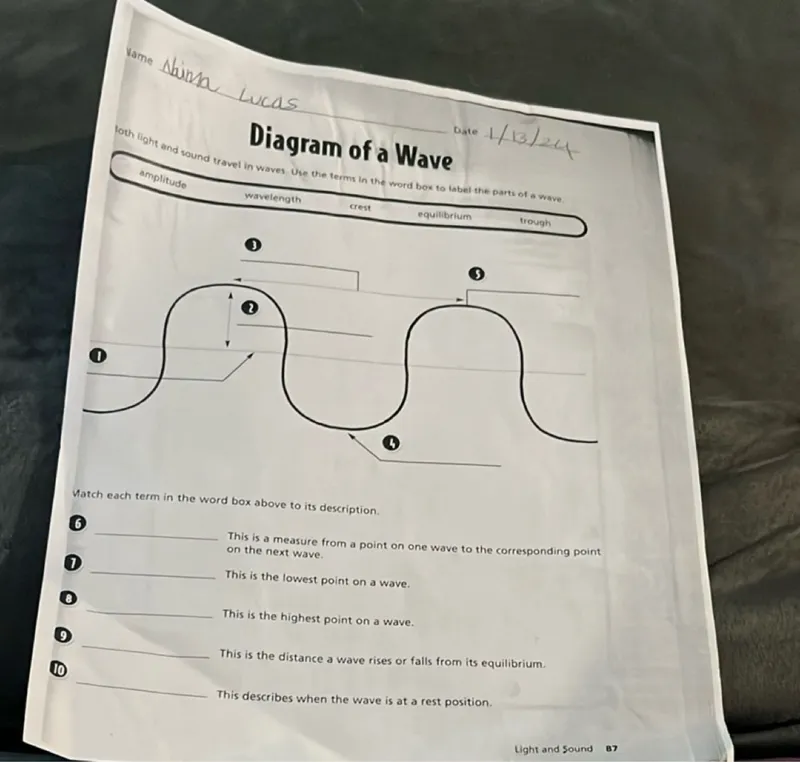Questions: This is a measure from a point on one wave to the corresponding point on the next wave. This is the lowest point on a wave. This is the highest point on a wave. This is the distance a wave rises or falls from its equilibrium. This describes when the wave is at a rest position.

Transcript text: This is a measure from a point on one wave to the corresponding point on the next wave.
This is the lowest point on a wave.
This is the highest point on a wave.
This is the distance a wave rises or falls from its equilibrium.
This describes when the wave is at a rest position.





